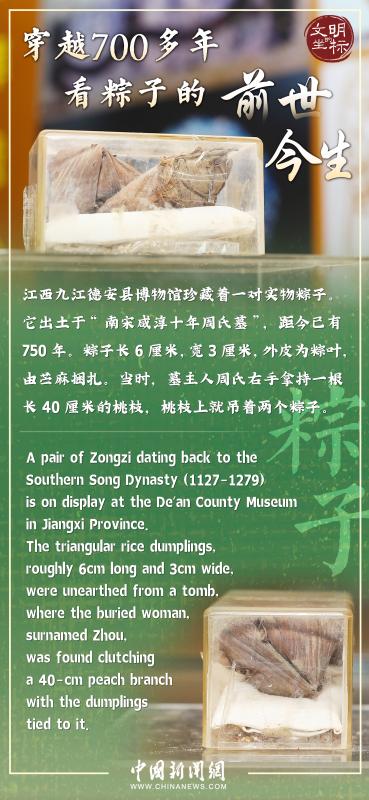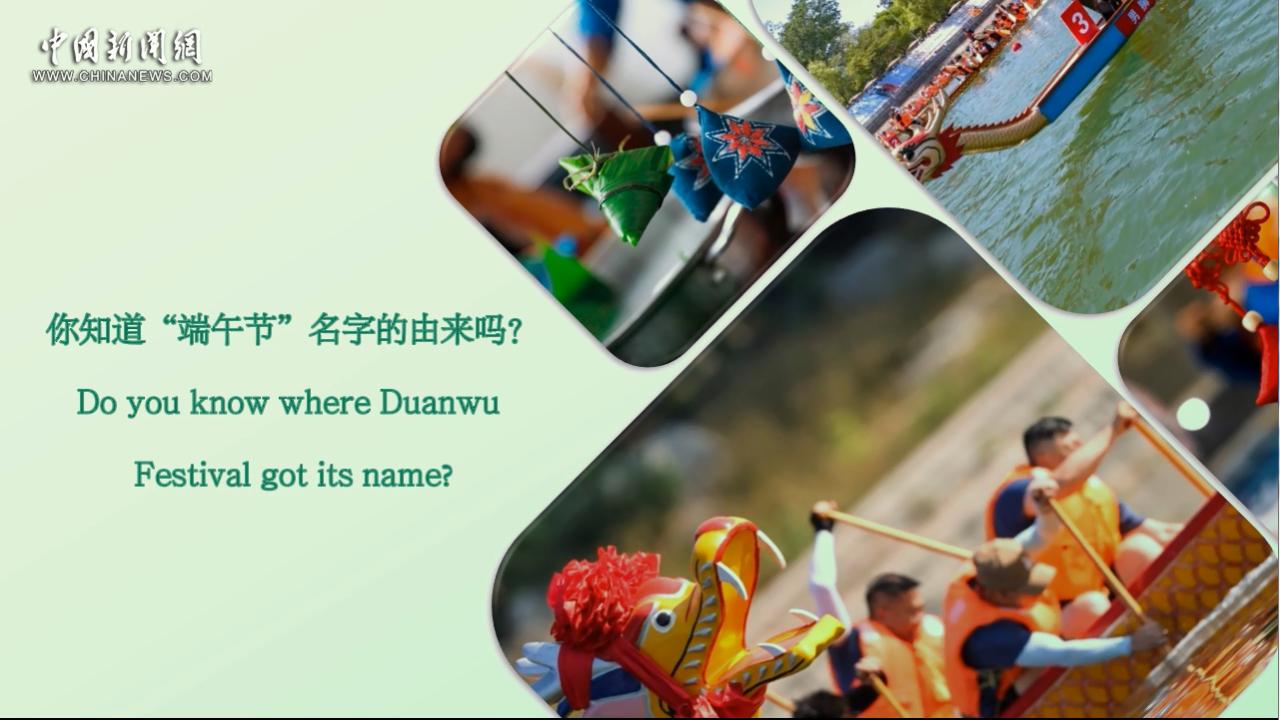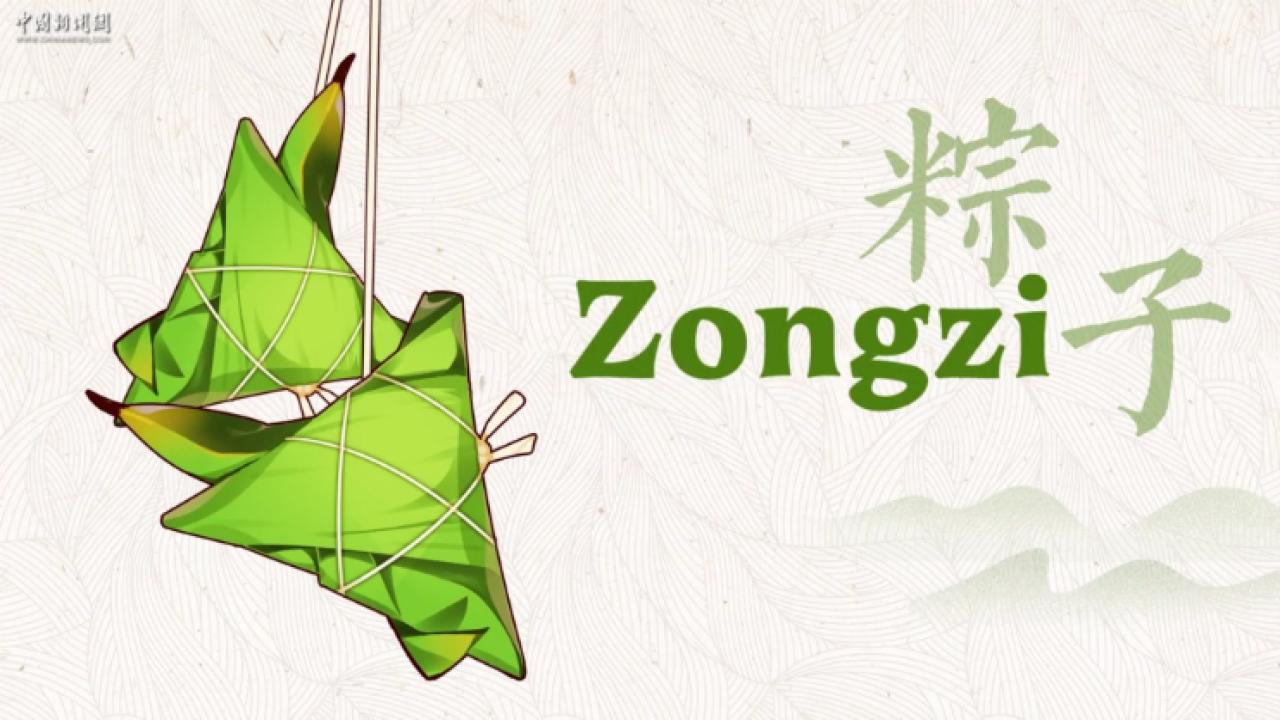
(ECNS) -- In ancient China's Spring and Autumn Period (770-476 BC), people used the leaves of wild rice to wrap glutinous rice into an ox-horn shape, thus giving it the name "jiaoshu," or "horn-shaped millet dumplings." At that time, jiaoshu were used as sacrifices to pay tribute to the ancestors and gods in the hope of a good harvest.
In memory of Qu Yuan, a patriot during the Warring States Period (475-221 BC) who was believed to have died on the day that the Duanwu Festival falls on, zongzi have always been connected with the festival.
A pair of triangular rice dumplings in De'an County Museum in Jiangxi province, which are roughly 6cm long and 3cm wide, were unearthed from a tomb built during the Southern Song Dynasty (1127-1279). The woman buried in the tombwas found clutching a 40-cm peach branch with the dumplings tied to it.
The weaving technique used for the dumplings reflects local traditions and is remarkably similar to modern ones. Guess which fillings are in them?























 京公网安备 11010202009201号
京公网安备 11010202009201号
